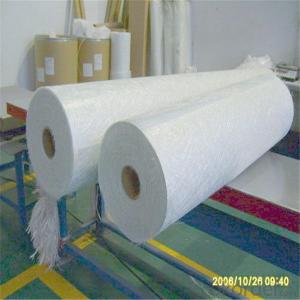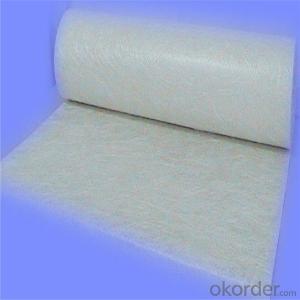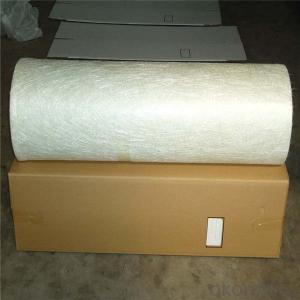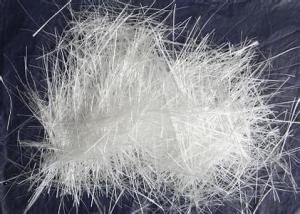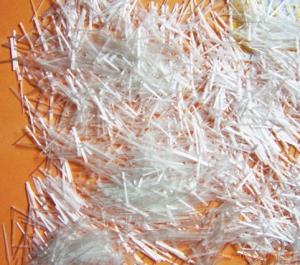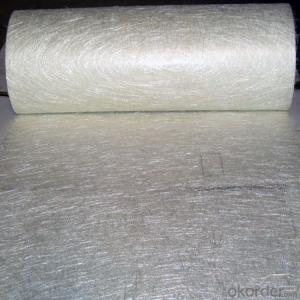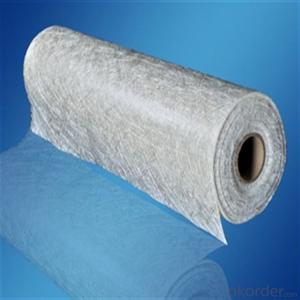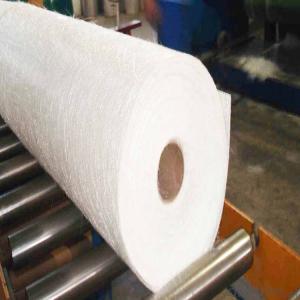300g 450g 600g Fiberglass Chopped Stand Reinforcement Mat
- Loading Port:
- Tianjin
- Payment Terms:
- TT OR LC
- Min Order Qty:
- 100 m.t.
- Supply Capability:
- 20000 m.t./month
OKorder Service Pledge
Quality Product, Order Online Tracking, Timely Delivery
OKorder Financial Service
Credit Rating, Credit Services, Credit Purchasing
You Might Also Like
Quick Details
| Technique: | Chopped Strand Fiberglass Mat (CSM) | Dimensions: | 450gsm | Mat Type: | Continuous Filament Mat |
| Fiberglass Type: | E-Glass | Softness: | softness | Place of Origin: | Jiangxi, China (Mainland) |
| Brand Name: | cnbm | Model Number: | 450gsm | color: | white |
| fiberglass type: | E glass | product: | e-glass powder chopped stand mats | binder: | powder or emulsion |
| width: | 1040 or 1270mm, as your requirement | weight: | 30 or 45kg/roll | paper tube diameter: | 90mm |
| outer diameter of roll: | 256mm | packing: | plastic film+carton box + pallet |
Packaging & Delivery
| Packaging Details: | plastic film+carton box + pallet |
| Delivery Detail: | 15-20days |
Specifications
1.e-glass powder chopped stand mats
2.binder:power or emulsion
3.width:1040mm or 1270mm
4.weight:450gsm
Picture
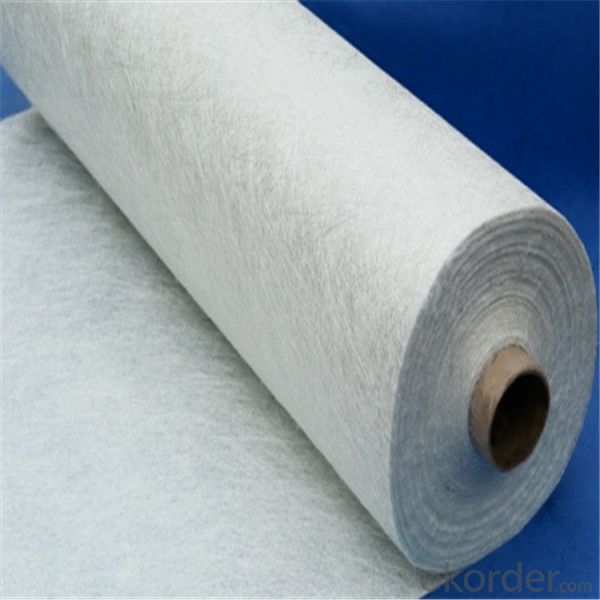
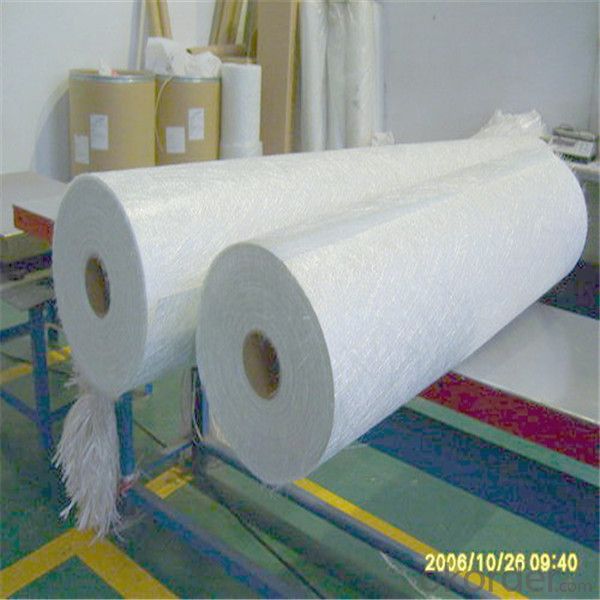
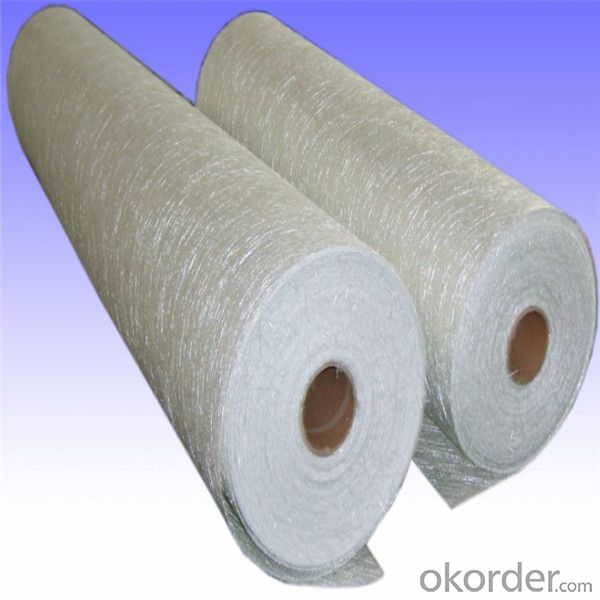
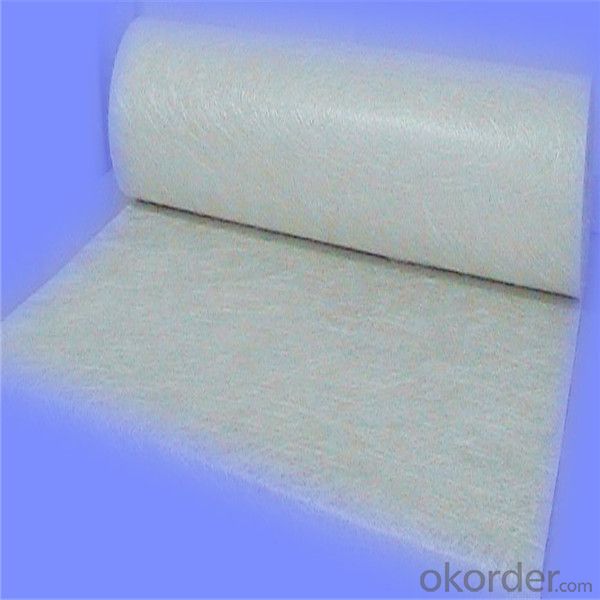
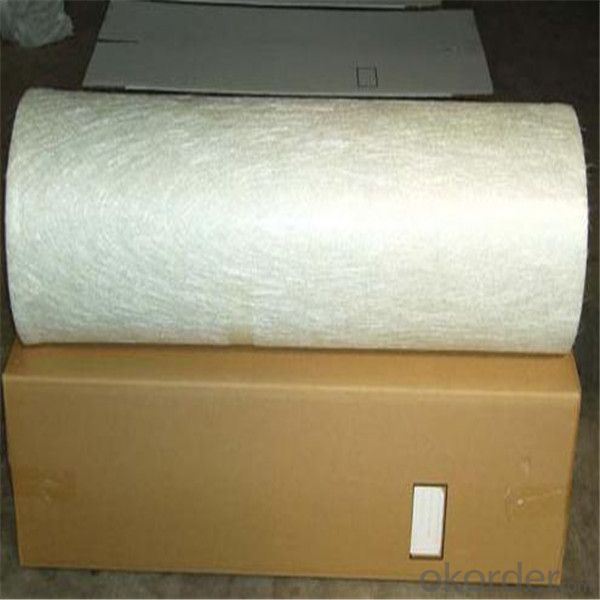
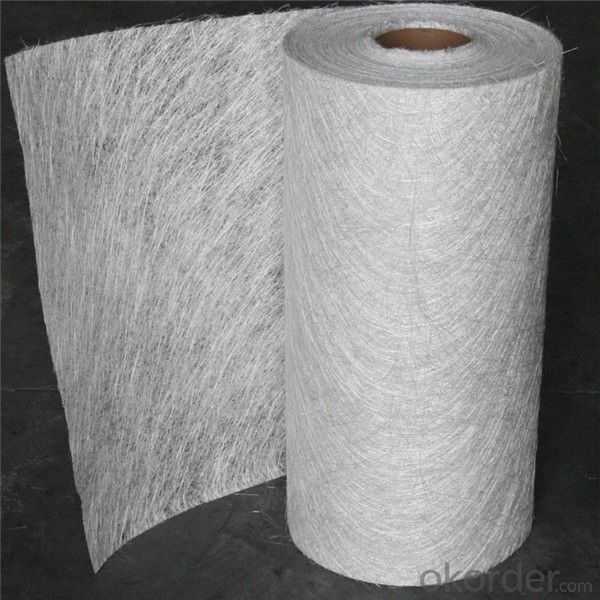
- Q:How does the fiber aspect ratio affect the performance of chopped strand composites?
- Determining the performance of chopped strand composites is greatly influenced by the fiber aspect ratio. The aspect ratio, which is the ratio of fiber length to fiber diameter, plays a crucial role in this regard. Typically, composites containing fibers with higher aspect ratios display improved mechanical properties. The inclusion of longer fibers ensures a more continuous reinforcement within the composite matrix, resulting in enhanced stiffness, strength, and fatigue resistance. This is due to the longer fibers creating a more efficient load transfer mechanism, which evenly distributes applied stress and prevents crack propagation. Moreover, fibers with higher aspect ratios provide superior interfacial bonding with the matrix material. This enhanced adhesion at the interface improves the efficiency of load transfer, reducing stress concentrations and minimizing the risk of delamination. Additionally, it enhances the overall toughness of the composite, making it more resilient to impacts and less susceptible to fiber pullout. However, the benefits of increasing aspect ratio have limitations. Beyond a certain point, longer fibers become more challenging to process and evenly disperse within the matrix. This can lead to fiber entanglement, clumping, or inadequate wetting, resulting in decreased mechanical properties and reduced composite performance. Furthermore, the aspect ratio can impact the manufacturing process of the composite. Fibers with higher aspect ratios may require more advanced processing techniques, such as injection molding or compression molding, to ensure proper alignment and distribution. On the other hand, shorter fibers with lower aspect ratios are often preferred for simpler manufacturing methods like hand lay-up or filament winding. In conclusion, the fiber aspect ratio has a significant impact on the performance of chopped strand composites. Higher aspect ratio fibers generally improve mechanical properties, interfacial bonding, and overall toughness. However, a careful balance must be struck between fiber length and diameter to achieve the desired performance characteristics, as exceeding the optimum aspect ratio range may pose processing challenges.
- Q:How does the fatigue resistance of fiberglass chopped strand compare to other reinforcing materials?
- The fatigue resistance of fiberglass chopped strand is generally considered to be superior to many other reinforcing materials. Its high tensile strength and flexibility allow it to withstand repeated stress and strain without significant degradation or failure. Additionally, fiberglass chopped strand has excellent resistance to corrosion, moisture, and UV radiation, which further enhances its durability and longevity.
- Q:Is fiberglass chopped strand resistant to chemicals?
- Yes, fiberglass chopped strand is generally resistant to chemicals. Fiberglass is made from a combination of glass fibers and a polymer matrix, which gives it excellent resistance to a wide range of chemicals. It can withstand exposure to various acids, alkalis, solvents, and other corrosive substances without significant degradation or damage. However, the specific chemical resistance of fiberglass chopped strand can vary depending on the specific type of resin used, the manufacturing process, and the specific chemicals involved. It is always recommended to consult the manufacturer's specifications or conduct chemical compatibility tests to ensure the suitability of fiberglass chopped strand for a particular chemical application.
- Q:Does fiberglass chopped strand require any special surface treatment before use?
- Indeed, prior to utilization, fiberglass chopped strand necessitates a distinctive surface treatment. Generally, this treatment is executed to heighten the adherence between the fiberglass strands and the matrix material, such as resin. This process entails the application of a sizing or a coupling agent onto the strands, which aids in augmenting the adhesion and compatibility between the fiberglass and the matrix material. Additionally, the surface treatment serves to safeguard the strands against moisture absorption and enhances their manageability during processing. In summary, the specialized surface treatment is imperative for guaranteeing the utmost effectiveness and longevity of fiberglass chopped strand across diverse applications.
- Q:What is the thermal shock resistance of fiberglass chopped strand?
- The thermal shock resistance of fiberglass chopped strand is generally high, as it can withstand rapid changes in temperature without cracking or breaking.
- Q:Can fiberglass chopped strand be used in the production of wind turbine blades?
- Wind turbine blades can benefit from the use of fiberglass chopped strand. This material is commonly utilized in composite manufacturing and brings various advantages to blade production. To begin with, fiberglass chopped strand boasts exceptional tensile strength and stiffness, vital qualities for withstanding the forces and loads experienced by wind turbine blades during operation. By enhancing the blades' structural integrity, it increases their durability and resistance to fatigue. Moreover, fiberglass chopped strand exhibits excellent resistance to corrosion and environmental degradation. This is particularly important for wind turbine blades, which are exposed to diverse weather conditions and elements such as UV radiation, moisture, and temperature fluctuations. Incorporating fiberglass chopped strand into blade construction ensures long-term performance and reliability. Additionally, fiberglass chopped strand is lightweight, a significant benefit for wind turbine blades. The lighter the blades, the easier it becomes for the turbine to capture wind energy and rotate efficiently. Utilizing fiberglass chopped strand reduces the overall weight of the blades while preserving their strength and stiffness. In conclusion, fiberglass chopped strand proves to be a suitable material for wind turbine blade production due to its high tensile strength, corrosion resistance, and lightweight properties. Its utilization contributes to the overall performance, durability, and efficiency of wind turbines, making it the preferred choice in the industry.
- Q:Can fiberglass chopped strand be used in the production of electrical enclosures?
- Yes, fiberglass chopped strand can be used in the production of electrical enclosures. Fiberglass is a versatile material that offers several benefits for electrical enclosures. It is a good insulator and can provide excellent electrical insulation properties necessary for protecting electrical equipment and components. Fiberglass chopped strand can be used in the manufacturing process to reinforce the enclosure, making it more durable and resistant to impact and corrosion. Additionally, fiberglass is lightweight and easy to work with, allowing for the creation of complex shapes and designs. Overall, fiberglass chopped strand is a suitable material for the production of electrical enclosures, providing both electrical insulation and structural reinforcement.
- Q:Can fiberglass chopped strand be used in the production of recreational vehicles?
- Yes, fiberglass chopped strand can be used in the production of recreational vehicles. It is commonly used as a reinforcing material in the construction of RV components, such as walls, roofs, and floors, due to its lightweight, high strength, and excellent moldability properties.
- Q:What are the acoustic properties of fiberglass chopped strand?
- Fiberglass chopped strand has several acoustic properties that make it a popular material in various applications. Firstly, it has excellent sound absorption capabilities due to its fibrous structure. The random orientation of the chopped strands creates spaces and voids that effectively trap and dissipate sound energy, reducing echo and reverberation in enclosed spaces. Additionally, fiberglass chopped strand exhibits low density, making it a lightweight material with good sound insulation properties. It can effectively block and reduce the transmission of sound waves, making it suitable for applications where noise control is important, such as in building construction or automotive interiors. Moreover, fiberglass chopped strand is known for its high tensile strength and durability, which contributes to its acoustic performance. Its strong and resilient nature allows it to maintain its sound-absorbing and insulating properties over time, even in demanding environments. Another advantage of fiberglass chopped strand is its versatility in terms of customization. It can be manufactured with varying thicknesses and densities to meet specific acoustic requirements. This flexibility allows it to be tailored for different applications, such as in soundproofing panels, acoustic ceiling tiles, or speaker enclosures. Lastly, fiberglass chopped strand is non-combustible and resistant to moisture, mold, and mildew. These properties make it suitable for use in areas where fire safety and moisture resistance are critical, such as in theaters, recording studios, or industrial settings. Overall, the acoustic properties of fiberglass chopped strand, including its sound absorption, insulation, strength, customization options, and resistance to fire and moisture, make it a favored material for a wide range of applications where sound control and quality are important.
- Q:What are the main applications of fiberglass chopped strand?
- Fiberglass chopped strand is a versatile material that finds numerous applications across various industries. The main applications of fiberglass chopped strand can be categorized into the following: 1. Construction: Fiberglass chopped strand is extensively used in the construction industry for reinforcing concrete structures. It adds tensile strength and durability to the concrete, making it resistant to cracks and other damages. It is commonly used in the construction of bridges, buildings, tunnels, and other infrastructure projects. 2. Composites: Fiberglass chopped strand is a key component in the manufacturing of composite materials. It is used to reinforce polymers, resins, and other matrix materials to create strong and lightweight composites. These composites find applications in industries like automotive, aerospace, marine, and sports equipment manufacturing. 3. Insulation: The excellent thermal and acoustic insulation properties of fiberglass chopped strand make it an ideal material for insulation applications. It is used to insulate walls, roofs, pipes, and other areas where thermal or acoustic insulation is required. Fiberglass chopped strand insulation helps in conserving energy, reducing noise transmission, and maintaining comfortable indoor environments. 4. Filtration: Fiberglass chopped strand is widely used in the production of various filtration media. Its high strength and chemical resistance make it suitable for applications like air filters, oil filters, water filters, and dust collectors. Fiberglass chopped strand filters are known for their high efficiency and long service life. 5. Electrical & Electronics: Due to its electrical insulation properties, fiberglass chopped strand is used in the manufacturing of electrical and electronic components. It is commonly used as insulation for wires and cables, printed circuit boards, transformers, and electrical appliances. It provides protection against electrical shocks and ensures reliable performance of these devices. 6. Automotive: Fiberglass chopped strand is extensively used in the automotive industry for various applications. It is used in the production of automotive parts like bumpers, body panels, interior trims, and engine components. Fiberglass chopped strand-reinforced composites offer high strength-to-weight ratio, corrosion resistance, and design flexibility, making them suitable for automotive applications. Overall, fiberglass chopped strand is a versatile material with a wide range of applications. Its strength, durability, thermal insulation, electrical insulation, and chemical resistance properties make it a preferred choice in various industries.
1. Manufacturer Overview |
|
|---|---|
| Location | |
| Year Established | |
| Annual Output Value | |
| Main Markets | |
| Company Certifications | |
2. Manufacturer Certificates |
|
|---|---|
| a) Certification Name | |
| Range | |
| Reference | |
| Validity Period | |
3. Manufacturer Capability |
|
|---|---|
| a)Trade Capacity | |
| Nearest Port | |
| Export Percentage | |
| No.of Employees in Trade Department | |
| Language Spoken: | |
| b)Factory Information | |
| Factory Size: | |
| No. of Production Lines | |
| Contract Manufacturing | |
| Product Price Range | |
Send your message to us
300g 450g 600g Fiberglass Chopped Stand Reinforcement Mat
- Loading Port:
- Tianjin
- Payment Terms:
- TT OR LC
- Min Order Qty:
- 100 m.t.
- Supply Capability:
- 20000 m.t./month
OKorder Service Pledge
Quality Product, Order Online Tracking, Timely Delivery
OKorder Financial Service
Credit Rating, Credit Services, Credit Purchasing
Similar products
New products
Hot products
Related keywords
